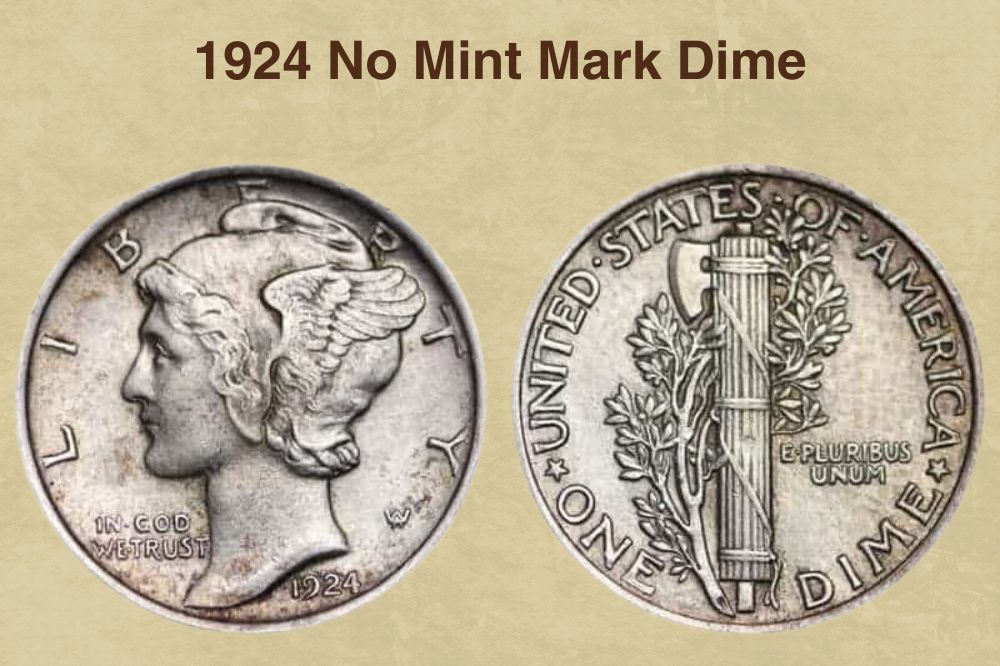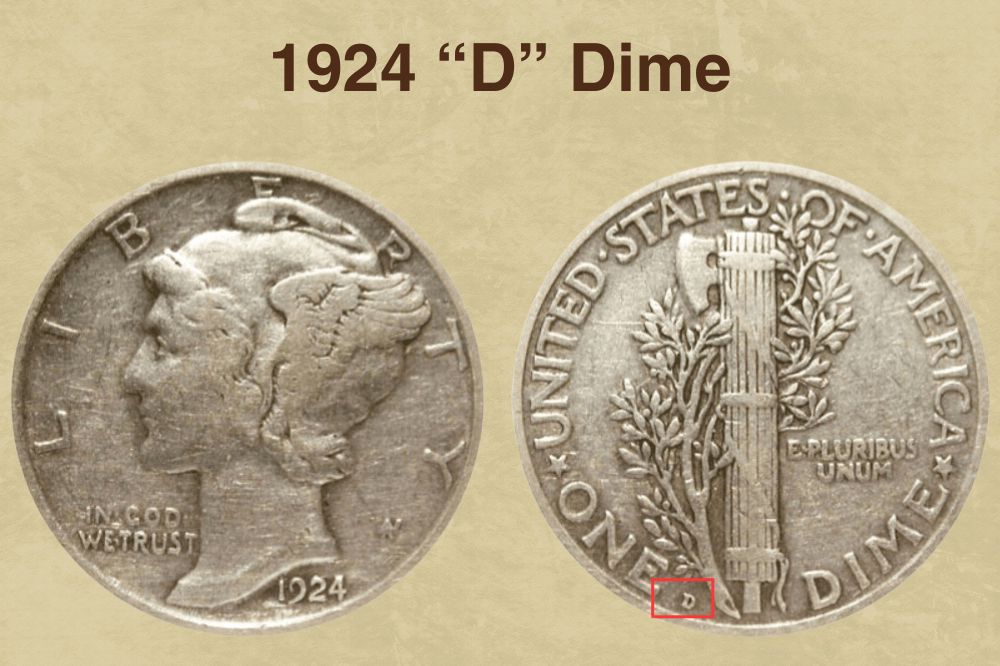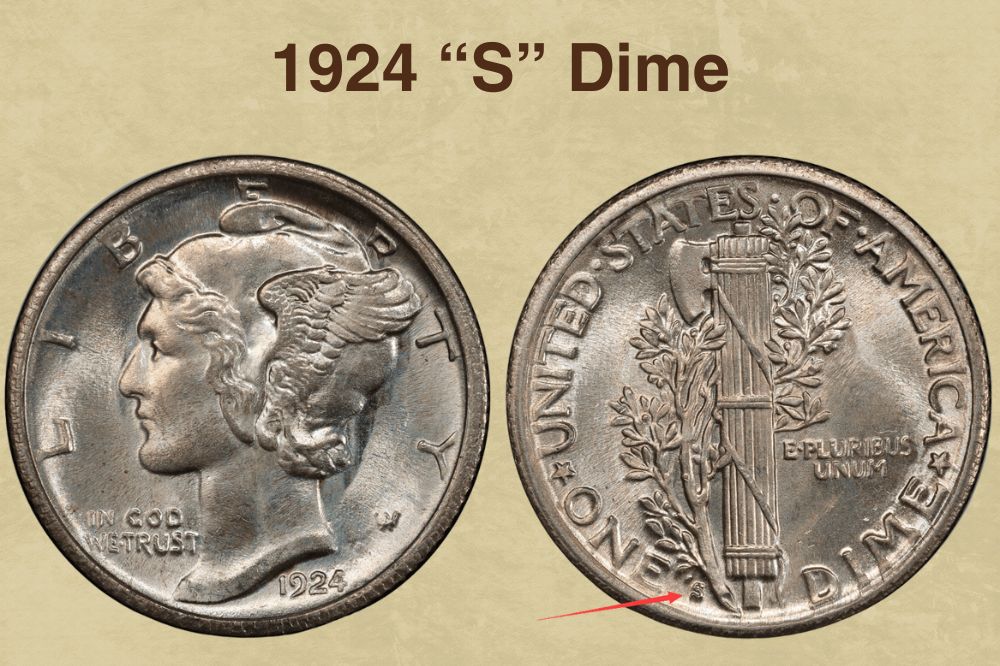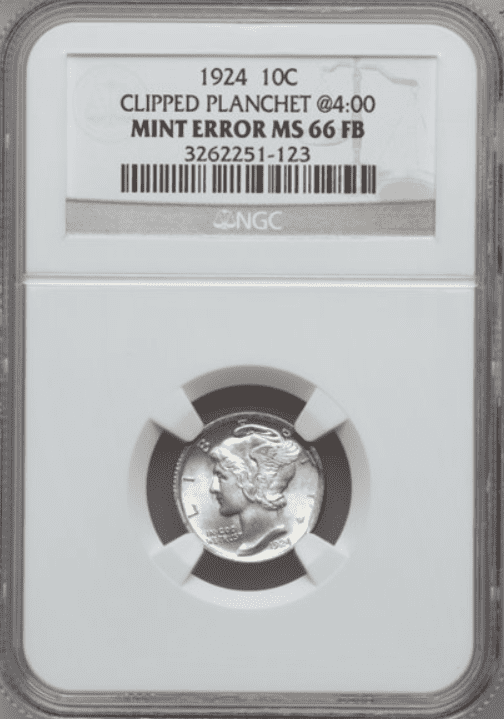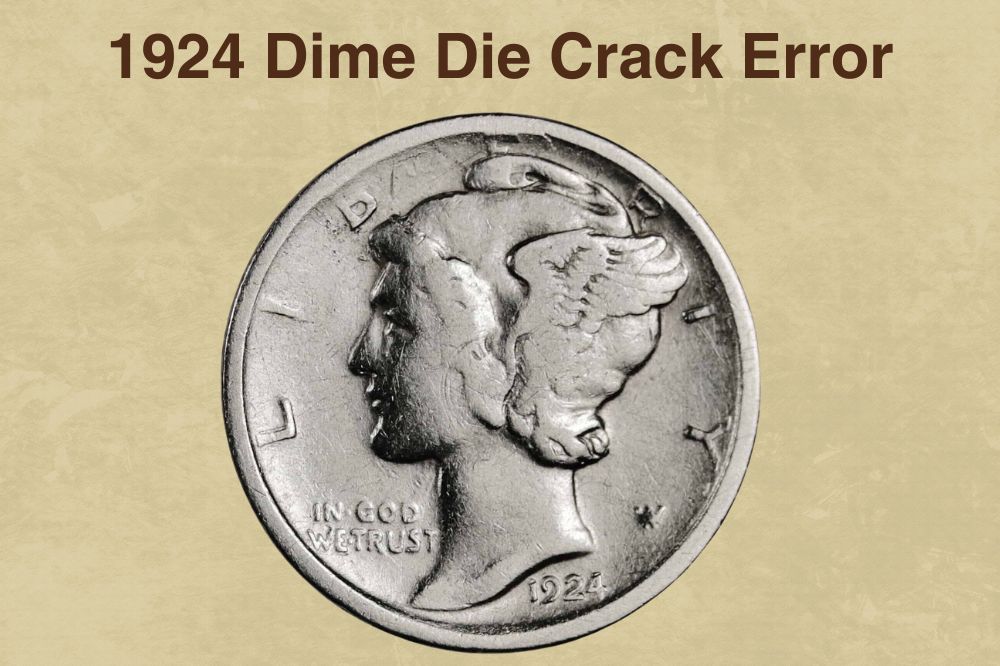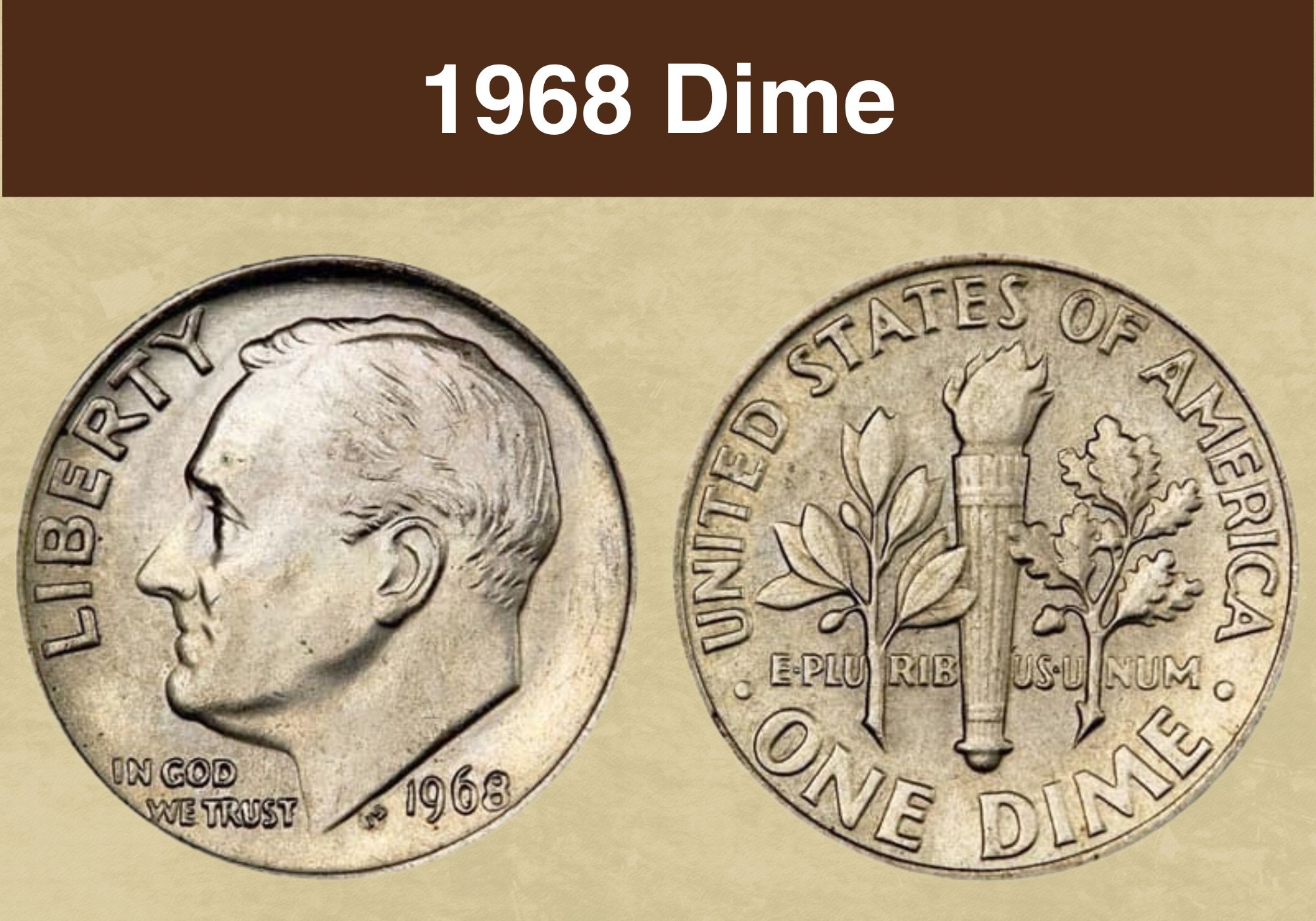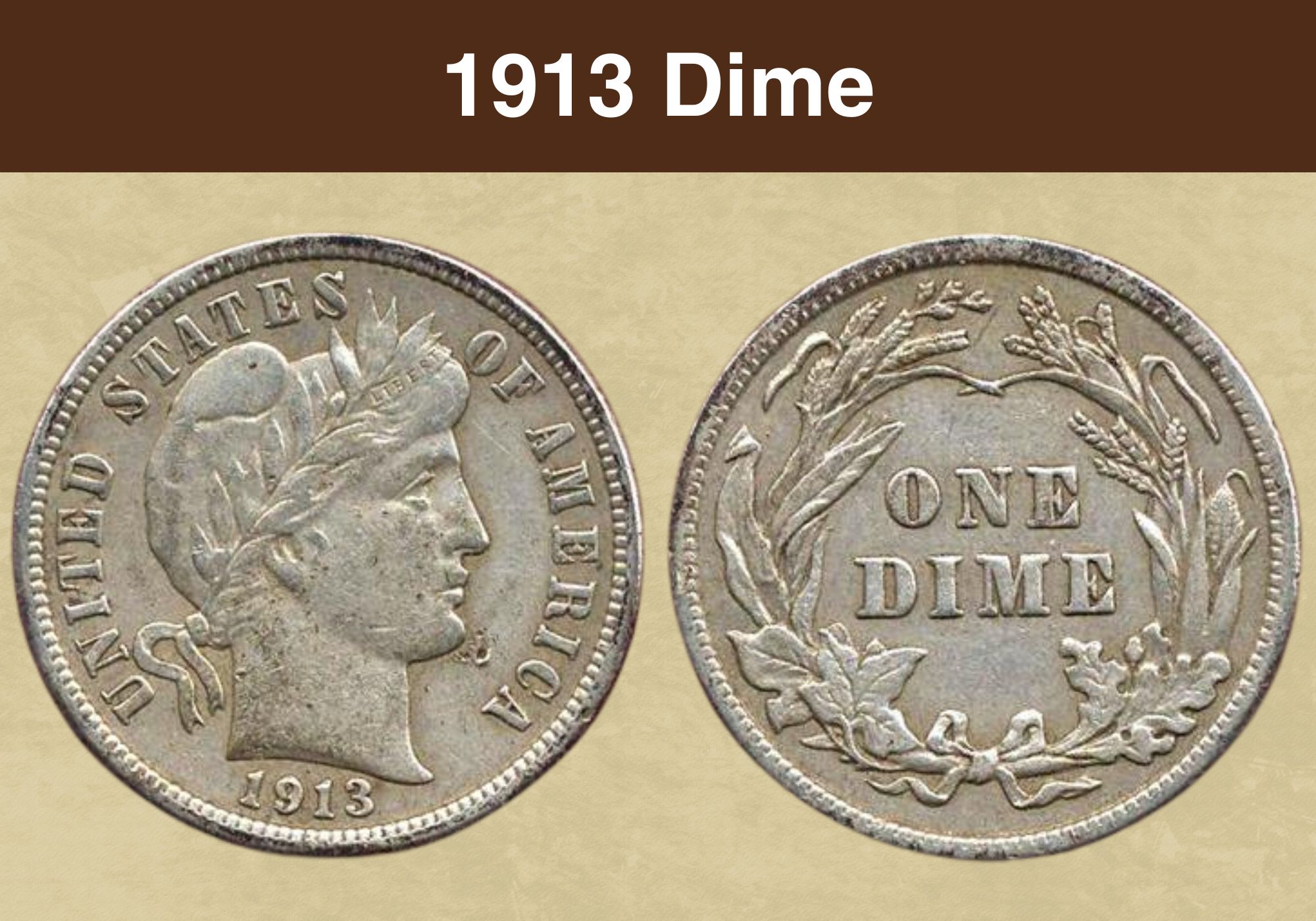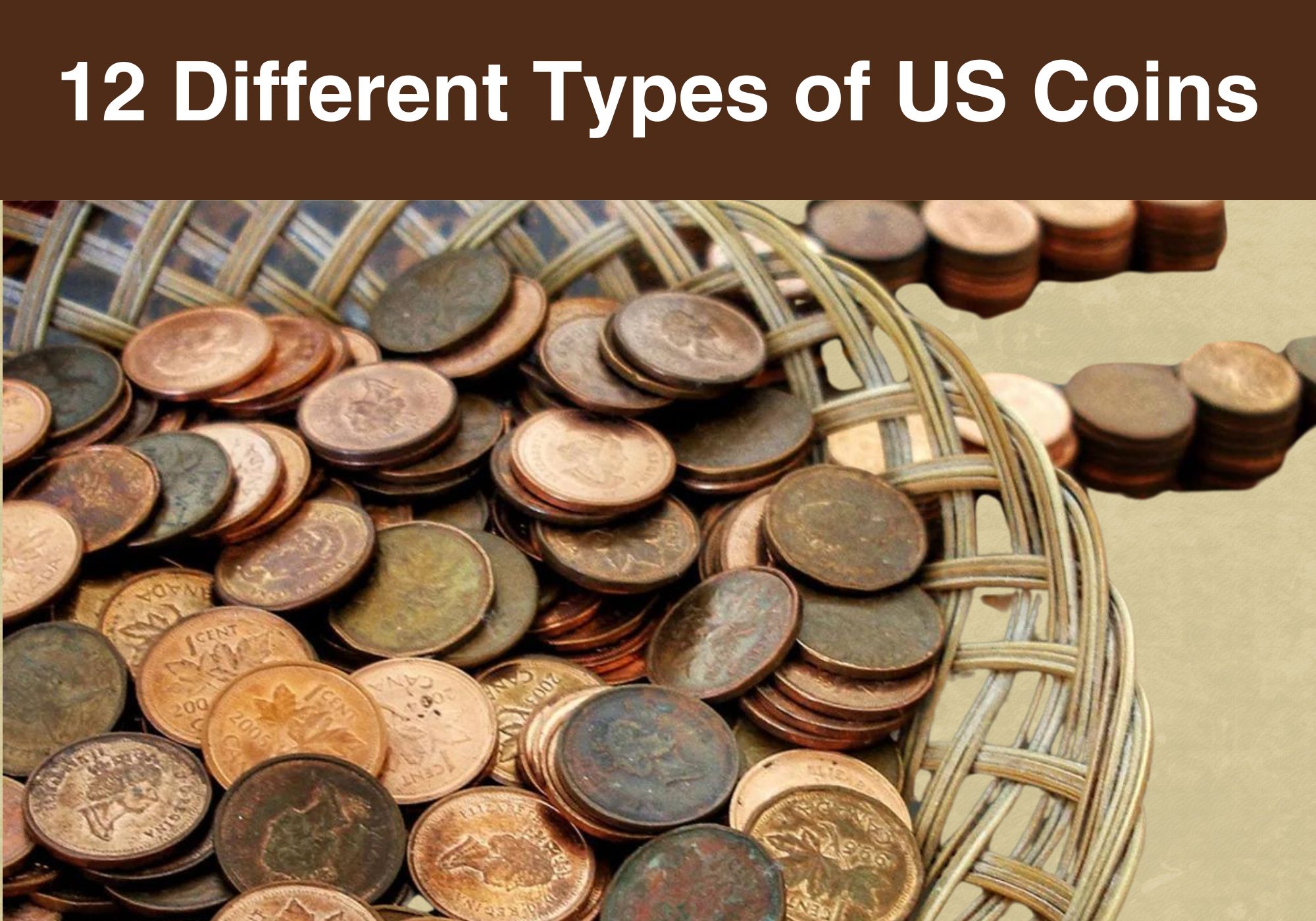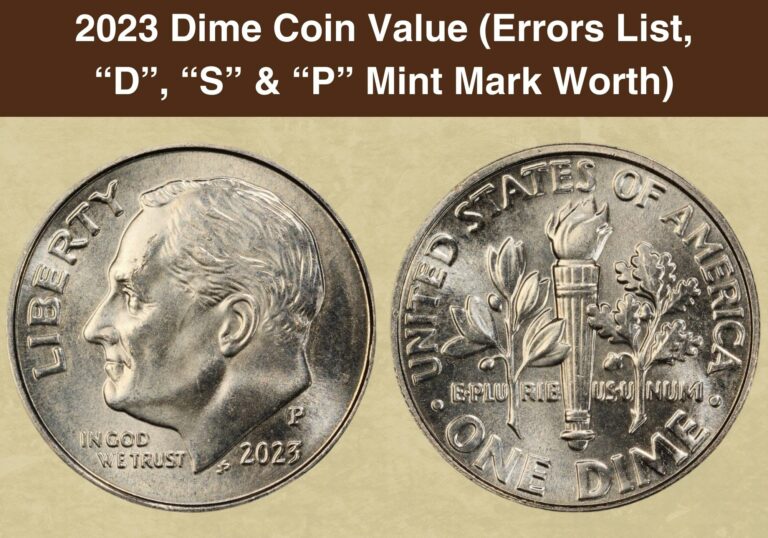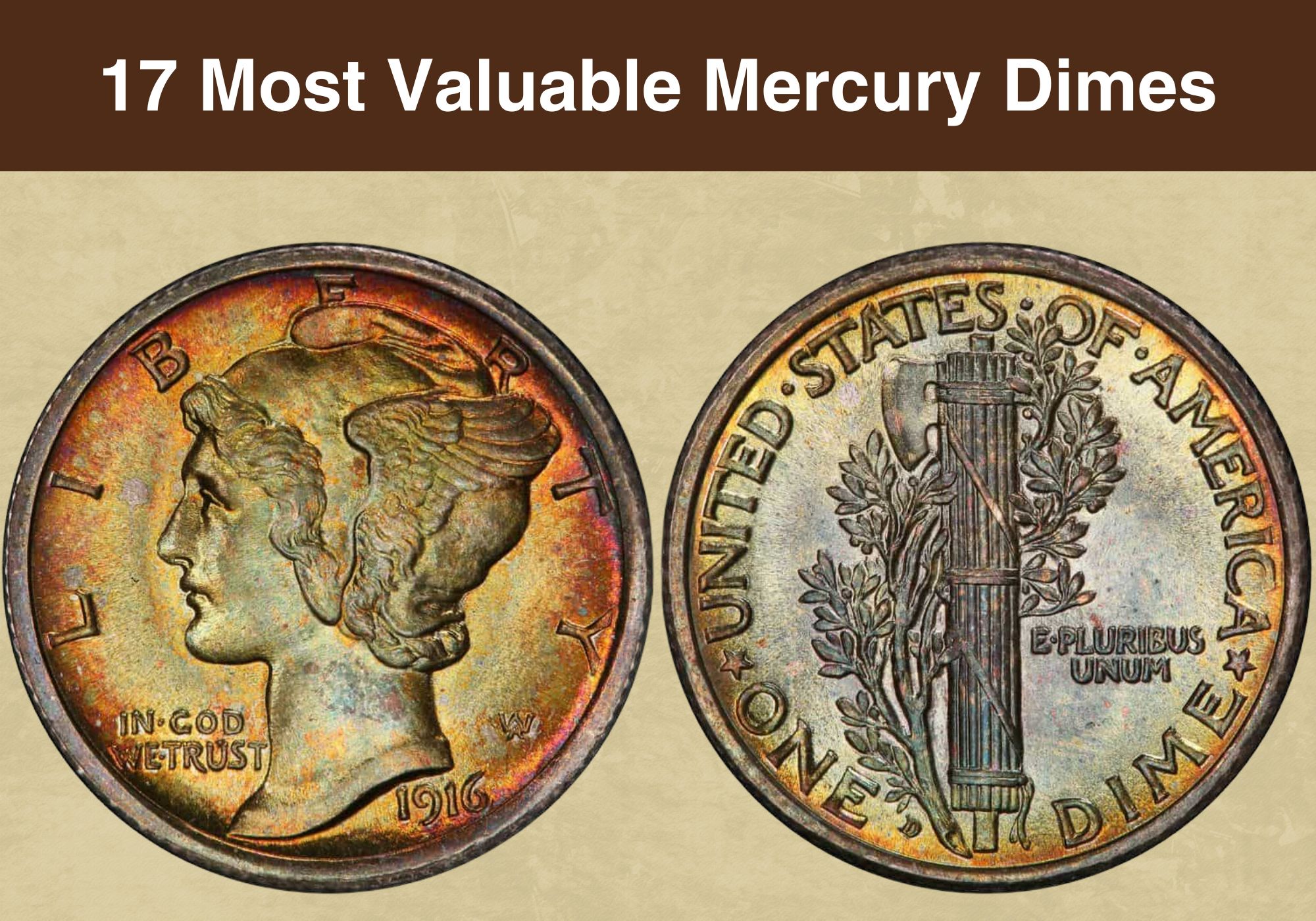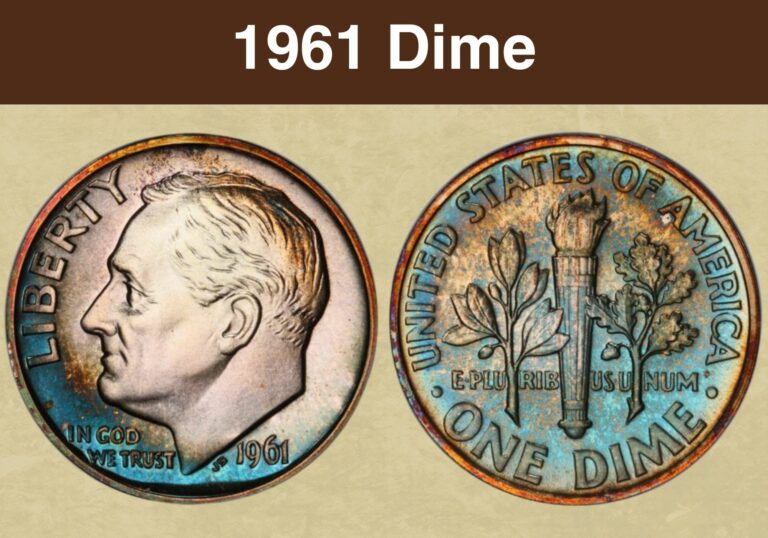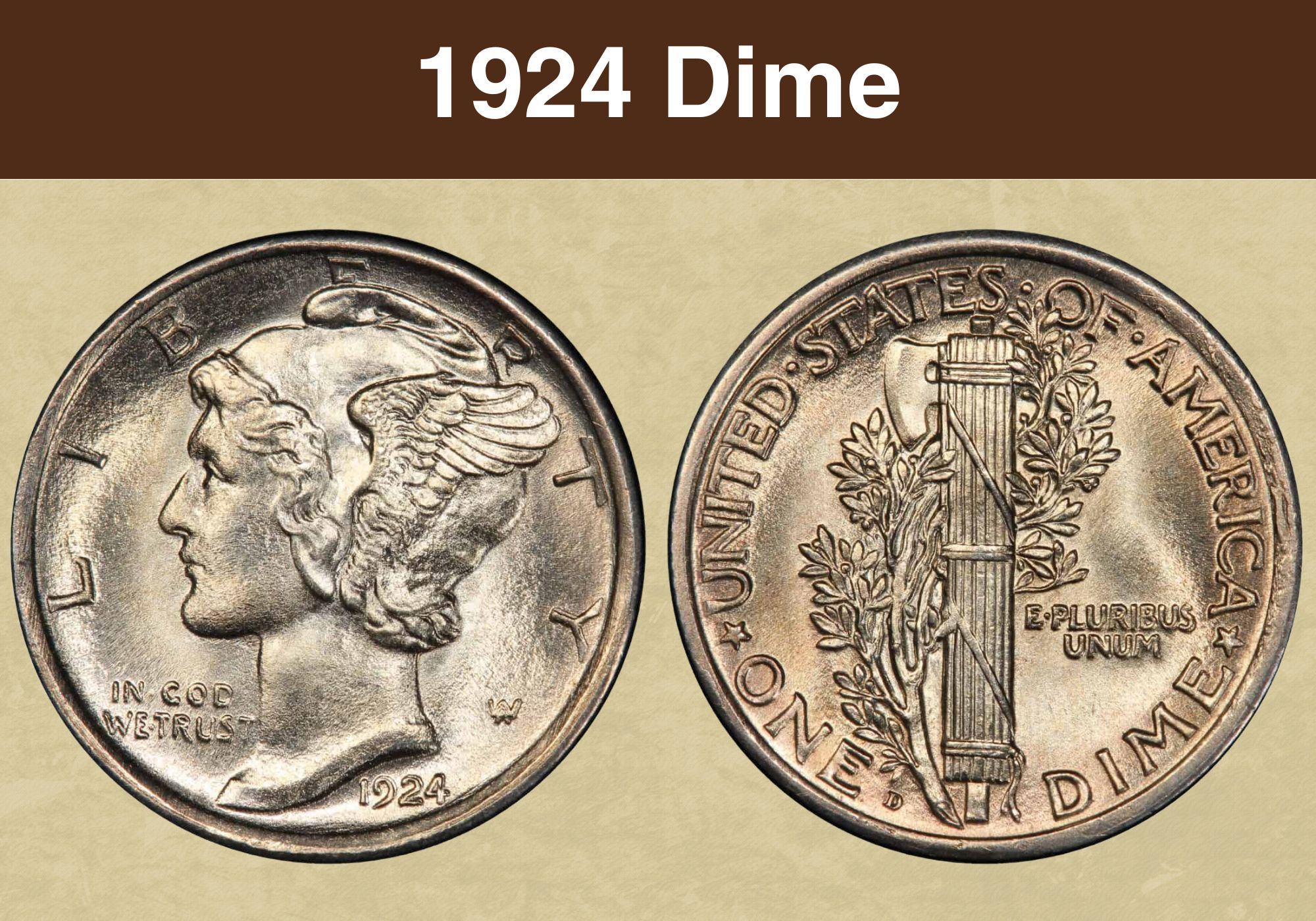
Coin Value Contents Table
Have you ever questioned the value of an old 1924 dime you discovered in your grandfather’s collection? You might be holding a priceless piece of history if you have a dime from 1924.
Dimes from that year can sell for hundreds of dollars at auction, despite some only being worth their face value of 10 cents. But what, exactly, makes a dime from 1924 valuable?
This article will provide all the information you need on the 1924 dime value. Let’s start right away!
1924 Dime Value Chart |
||||
| Mint Mark | Good | Fine | Extremely Fine | Uncirculated |
| 1924 Dime without Mint Mark | $4.21 | $5.46 | $18 | $53-$204 |
| 1924 “D” Dime | $4.81 | $10.18 | $82 | $24-$1109 |
| 1924 “S” Dime | $4.81 | $7.64 | $69 | $293-$1423 |
1924 Dime Grading
Collectors and experts grade the 1924 dime using a system known as the Sheldon Scale, which has a range of 1 to 70. A coin with a grade of 3 or lower is regarded as being in bad condition, while one with a grade of 70 is thought to be perfect.
The 1924 Dime is graded in a variety of ways, including Good, Very Good, Fine, Extremely Fine, About Uncirculated, and Uncirculated. The value of a coin can vary greatly depending on its condition, so proper grading is essential in making this judgment.
| # | Grade |
|---|---|
| 1 | Basal State-1 |
| 2 | Fair |
| 3 | Very Fair |
| 4, 5, 6 | Good |
| 7, 8, 10 | Very Good |
| 12, 15 | Fine |
| 20, 30 | Very Fine |
| 40 | Extremely Fine |
| 50 | About Uncirculated |
| 60 | Mint State |
| 65 | Mint State |
| 70 | Mint State |
Please check our grading guides to know your coin scale, It’s the necessary step to know the exact value of your coin.
Check out now: How to Grade Mercury Dime?
1924 No Mint Mark Dime Value
Today’s collectors place great value on the 1924 dime, an intriguing piece of American history. Created by the United States Mint over a century ago, this small coin has weathered the ravages of time and is a valued treasure for those who admire its artistry and uniqueness.
The 1924 dime was issued as a component of the Mercury dime series, which ran from 1916 through 1945. The 1924 dime’s obverse design depicts Lady Liberty wearing a Phrygian cap, which stands for independence and liberty.
The image on the opposite side depicts an olive branch, which stands for peace, and a fasces, which represented authority in ancient Rome. The design was developed by Adolph A. Weinman, who also designed the Walking Liberty half dollar.
One of the most well-known sculptors of his day, Weinman’s work may be found in numerous public structures and monuments across the nation.
His Mercury dime design, now regarded as one of the most exquisite and distinctive in American coinage, was particularly well-liked by the general population.
The 1924 dime has a diameter of 17.8 mm, weighs 2.5 grams, and comprises 90% silver and 10% copper. Although the 1924 dime without mint mark has intrinsic worth due to its silver content, collectors value it more for its rarity.
The 1924 Dime without a mint mark was minted at the Philadelphia Mint with a high mintage of 24,010,000, more significant than the other two varieties produced in the Denver and San Francisco Mints. This makes it relatively more common than the others.
However, the right collector will delightfully pay top dollar to acquire a 1924 Dime without a mint mark in pristine condition. To give you a better idea about the value of this remarkable coin, here are some general estimates:
The value of the 1924 Dime without a Mint Mark can vary greatly based on its condition, with the coin’s grade playing a crucial role in determining its worth. For instance, if the coin is graded as “Good,” it is valued at around $4.21 due to heavy wear on its major design elements.
However, if the coin is graded as “Uncirculated,” it could be worth as high as $240, depending on its specific grade and any additional factors that may affect its rarity or desirability to collectors.
In “Extremely Fine” condition, the coin’s value may be around $18, while in “Fine” condition, it could fetch up to $5.46.
As mentioned before, collectors and enthusiasts prize coins that are in pristine condition, with most of the design details being well-preserved, which is why rare specimens of the 1924 Dime without mint mark can command hundreds or even thousands of dollars at auctions.
In 1997, a collector snagged a 1924 Dime without a mint mark, graded MS-67, by submitting a winning bid of $3,850 at an auction held by renowned coin dealer David Akers.
1924 “D” Dime Value
Collectors value and actively seek the 1924 “D” dime for its scarcity and intriguing past. The “D” mintmark on the 1924 “D” dime denotes that it was produced at the Denver Mint. The mintmark is located above the fasces on the coin’s back side.
The Denver Mint was one of the three mints that produced dimes that year, alongside Philadelphia and San Francisco. The renowned designer Adolph A. Weinman was responsible for the captivating design of the 1924 “D” Mercury Dime as well.
The Roman god Mercury is portrayed as Lady Liberty on the front of the 1924 “D” dime, and she wears a winged cap to signify freedom of thought.
The fasces, a bundle of rods that represents authority, and the olive branch, a representation of peace, are shown on the coin’s reverse side. The pattern is regarded as one of the most attractive and well-liked among US coins.
6,810,000 dimes were made by the Denver Mint in total that year. Of the three mints that struck dimes in 1924, this one had the lowest mintage.
Due to a labor strike, the Denver Mint was forced to close down temporarily in 1924, which may have affected the low mintage of the 1924 “D” dime. Due to the limited mintage, the 1924 “D” dime is regarded as one of the rarest in the Mercury dime series.
Apart from its limited mintage, the fact that a lot of these coins were misplaced or smelted during the Great Depression, the 1924 “D” dime is extremely rare. Together with the 1916 “D,” 1921, and 1931 “S” dimes, the 1924 “D” dime is regarded as one of the important dates in the Mercury dime series.
As a result, a 1924 “D” dime’s worth can vary substantially depending on its quality and condition. A coin classified as “Good” could be worth $4.81, while one graded as “Extremely Fine” could be worth $82.
Depending on its grade and any additional factors that may affect it, a coin rated “Mint State” or “Uncirculated” may be valued at several hundred dollars or more. Generally, the prices can soar as high as $2000 for immaculate coin specimens.
An excellent example of the high demand and value of the 1924 “D” dime is a 2010 auction held by Heritage Auctions. The auction featured a 1924 “D” dime graded MS-67.
The coin sold for an impressive $9200, a testament to the rarity and value of this particular date and mintmark combination.
1924 “S” Dime Value
The 1924-S dime is a rare specimen with high value for coin collectors. The 1924 “S” Dime, like other coins in the Mercury dime series, is renowned for its elaborate design, which includes the Lady Liberty facing left on the obverse side and a fasces—an old Roman symbol of authority—on the reverse side.
On the reverse side, underneath the fasces, the 1924-S dime has the mintmark “S.” This mintmark identifies the San Francisco Mint where the coin was struck. The existence of a mintmark can considerably impact a coin’s value because it denotes the coin’s rarity and place of origin.
The 1924 “S” dime weighs 2.5 grams overall and comprises 90% silver and 10% copper. The coin is 17.8 mm in diameter. The composition and weight of the coin were typical for dimes produced at the time.
The 1924 “S” dime is one of the rarest coins in the Mercury dime series, with a total mintage of just 7,120,000 pieces. The San Francisco Mint concentrated on making other coin denominations that year, which resulted in a low mintage.
However, the limited mintage of the 1924 “S” dime is not the only reason for its rarity; many of these coins were either misplaced or destroyed over time.
The historical background of the 1924 “S” dime and its rarity add to its significance. The “Roaring Twenties,” a period of economic success for the United States, is when the dime was first produced.
Mercury, a representation of speed and agility on the dime, represents the nation’s growth in both industry and economy during this time.
Collectors greatly value the 1924 “S” dime, especially in better grades. The value of a 1924 “S” dime in extremely fine condition ranges from $55 to $69, while uncirculated coins can sell for $8000 or more. In 2016, a 1924 “S” dime graded MS-66 was auctioned off for $18,800.
It’s interesting that 1924 “S” dime conspiracy claims are also increasingly common. Some people think that the dime includes a hidden message that foretells JFK’s assassination.
The dime’s design supports the idea because of the fasces on the reverse side, which is sometimes linked to fascism. These theories, however, have been refuted by numismatic authorities.
Also read: Top 17 Most Valuable Mercury Dimes Worth Money
Rare 1924 Dime Error List
1924 Dime Clipped Planchet Error
The 1924 Dime clipped planchet error is a rare variety of the Mercury Dime. The planchet (or blank metal disc) used to strike the coin was improperly cut during the minting process, which led to a clipped or missing section of the planchet.
The 1924 Dime’s clipped planchet fault is particularly noticeable because of the extent of the clip. Its size can vary, although occasionally it can be almost as large as half the coin’s diameter.
The error can appear anywhere along the coin’s edge, although it is most frequently noticed right below the word “ONE” at the bottom of the reverse side.
Coin collectors prize the 1924 Dime clipped planchet error due to its scarcity. The coin’s worth varies according to the coin’s overall condition, size, and location of the clip. Coins with larger clips or clips placed in more noticeable spots are typically more valued.
1924 Dime Die Crack Error
Another intriguing Mercury Dime variation is the 1924 Dime with Die Crack Error. This mistake happens when the coin-striking dies are cracked or broken, leaving a line or fissure on the coin’s surface. Any area of the coin may experience a die fracture, which can vary in size and shape.
Die fractures are especially fascinating in the case of the 1924 Dime because they can produce unique surface patterns.
For instance, a die crack that extends from the coin’s edge to the image of Lady Liberty can seem like a lightning bolt. Die cracks can also produce elevated regions on the coin’s surface, giving it a distinctive appearance.
The degree and location of the die crack fault, as well as the overall condition of the coin, determine the value of a 1924 dime with the error. This is similar to the clipped planchet error.
Collectors frequently seek coins with unusual or distinct die cracks because they are the most aesthetically pleasing.
Also read: 13 Most Valuable Dime Errors Worth Money
Where to Sell Your 1924 Dime ?
Now that you know the value of your coins, do you know where to sell those coins online easily? Don’t worry, I’ve compiled a list of these sites, including their introduction, pros, and cons.
Check out now: Best Places To Sell Coins Online (Pros & Cons)
1924 Dime FAQs
Is a dime from 1924 worth anything?
Yes, a dime from 1924 is worth more than its face value due to its collectible worth as a coin. The mintmark, condition, and rarity of a 1924 dime affect its worth.
What is the value of a 1924 D Mercury Dime?
A 1924 D Mercury Dime’s value varies based on its condition. Still, as of April 2023, a coin classified as mint state (MS) 63 is worth around $410, one certified as MS-65 is worth about $1000, and one graded as MS-67, which is regarded to be in superb condition, is worth about $2000 or more.
Yet, depending on the coin’s availability and market demand, the value may change. To accurately assess the coin’s value, having a qualified coin dealer or grading service review is always a smart idea.
How do I know if my Mercury Dime is valuable?
A Mercury Dime’s worth is determined by its rarity, mintmark, and condition. Keep an eye out for any unusual flaws or variants, and have your coin valued by a certified numismatist to determine its precise value.

